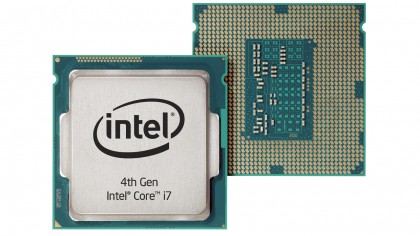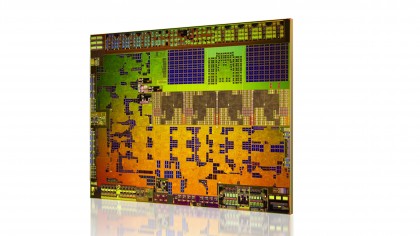Intel and AMD show the future of computing
The next generation of processors brings improvements you can really see

Knock knock! "Who's there?" The interrupting cow! "The interr-" MOO!
That's one of our favourite jokes, but if you don't time it perfectly it isn't funny at all. Timing doesn't just matter in comedy, though. It matters in technology too - and this week, AMD and Intel were given a right good moo-ing by Microsoft, Sony and the entire consumer electronics industry.
The timing wasn't brilliant - the chip firms were overshadowed by last week's PS4 and Xbox One announcements and the usual rumours and leaks that turn up in the run-up to Apple's WWDC and the E3 consumer electronics conference - but the tech was. Intel has its new, hotly anticipated Haswell chips, and AMD has unveiled the desktop processors formerly codenamed Richland.
Haswell is here
Intel's Haswell processors are "a new family of 22nm processors from Intel, still known as i3, i5 and i7 inside PCs and on the shelf," Jeremy Laird explains. That's great news if mobility matters, but it's not so good if you're a power-crazed desktop speed-fiend: "what was a niggling doubt with previous processors has become screamingly obvious. Intel has done almost nothing to improve the desktop experience with Haswell."

That's the bad news. The good? "For mobile PCs, Haswell is all kinds of awesome," Laird says. "You could even argue it's the beginning of a new era of computing." That's right: while the internet is still arguing over exactly how ugly the Xbox One is and whether the PS4 should block used games, Intel only went and unveiled A WHOLE NEW ERA OF COMPUTING.
Hype? Apparently not. Imagine "laptops that can survive a week on a single charge. Touch devices that combine a true tablet form factor with the power of a desktop PC. A shark with frickin' laser beams." Jeremy didn't write that last item, but he did write an incredibly detailed and useful explanation of why Haswell is so important, and what kind of devices it could lead to. He also wrote this: "What we desperately need [is] for AMD to give Intel a kick up the behind in the shape of some faster CPUs. Of course, the good news is that Intel's current tactic of mostly standing still is giving AMD a better chance of catching up."
Can AMD close the gap?
AMD is certainly trying to do just that. As Dan Grabham reports, AMD's A4, A6, A8 and A10 processors are available "up to 4.4GHz with 4MB of cache and up to 779 GFLOPS of compute power". We think we can all agree that that's a lot of FLOPS. The processors promise 21 per cent improved performance over last year's Trinity processors, and AMD's figures for PC Mark 7 suggest an eight per cent performance increase compared to Trinity.
Sign up for breaking news, reviews, opinion, top tech deals, and more.

The desktop processors aren't the only new processors in AMD's portfolio. Last month we saw the launch of new mobile Richland processors plus Kabini chips for mainstream laptops and Temash for tablets and hybrids. As Jeremy Laird points out in his AMD A4-5000 APU review, the Kabini's Jaguar cores are "found in both Microsoft's new Xbox One console and the PlayStation 4 from Sony. Yup, AMD's Jaguar architecture is a very big deal."
The final frontier
We've spent many years drooling over megahertz, gigahertz and core counts, but processors have long since reached the point where pretty much everything is ridiculously quick. Rather than expend their energies on slightly faster speeds, Intel and AMD are now focusing their energies on improvements you'll actually notice - and that means improving graphics performance and power consumption rather than sheer horsepower. "Graphics performance is in many ways the final frontier of computing," Laird says. "It's also the last major differentiator between desktop PCs and mobile devices."
"The work Intel has done with both power consumption and integrated graphics is excellent for laptops and tablets," Laird says. "It's also very promising for a new generation of ultra-compact PCs, including Intel's own NUC as well as set-top boxes, tiny gaming machines, PCs hanging off the back of monitors, you name it, Haswell is going to make it either possible or much better than before."
There are already 50 Haswell powered 2-in-1 ultrabooks ready to launch, and we reckon there'll be at least one interesting Haswell-related announcement on Monday too. If Tim Cook doesn't show off Haswell-powered Macs during Monday's WWDC keynote, we'll be amazed.

Contributor
Writer, broadcaster, musician and kitchen gadget obsessive Carrie Marshall has been writing about tech since 1998, contributing sage advice and odd opinions to all kinds of magazines and websites as well as writing more than twenty books. Her latest, a love letter to music titled Small Town Joy, is on sale now. She is the singer in spectacularly obscure Glaswegian rock band Unquiet Mind.